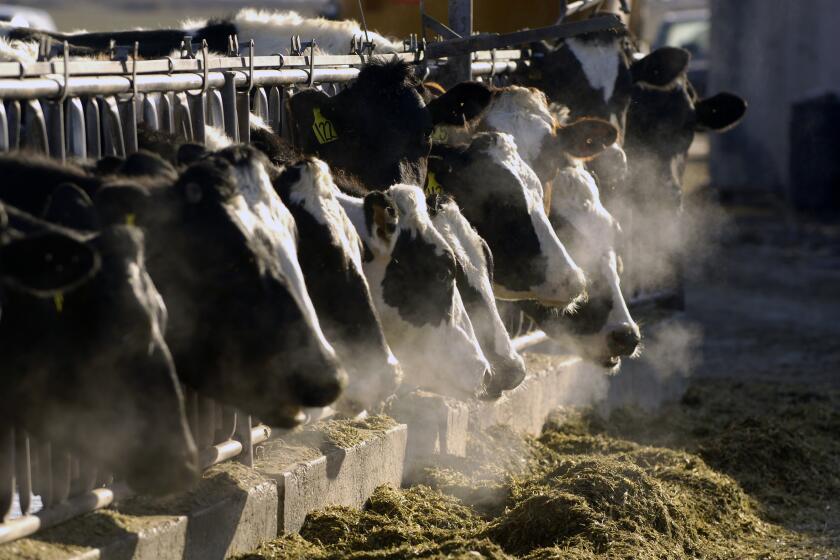A Pasadena Craftsman’s native plant garden
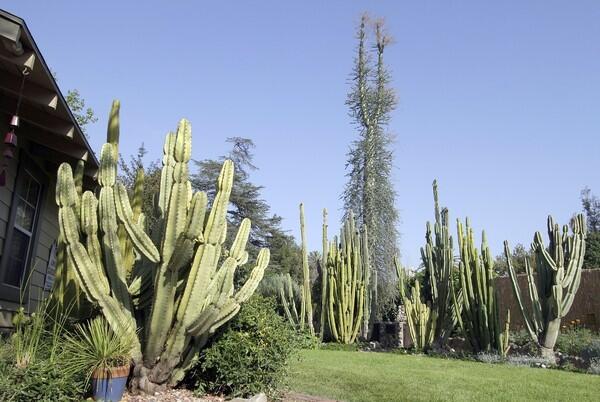
A boojum tree, center, rises above night-blooming cereus. (Lawrence K. Ho / Los Angeles Times)
With the Theodore Payne Foundation’s annual native plant garden tour approaching, we visited one of the tour stops: Debe Loxton and Martha Clark’s mix of natives and edibles in Pasadena.
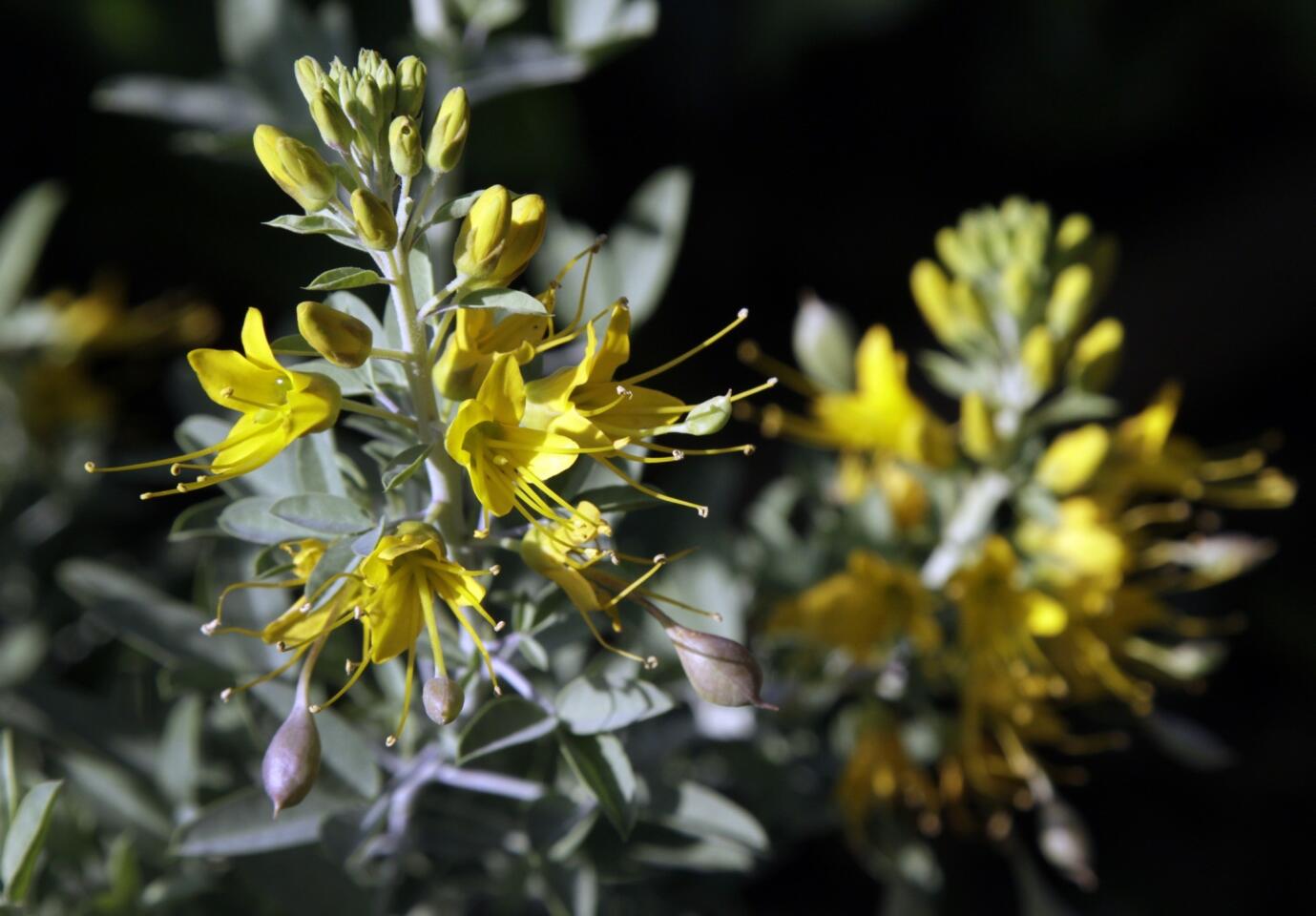
The yellow flowers of the bladderpod, a California native, play off the gray-green foliage. (Lawrence K. Ho / Los Angeles Times)
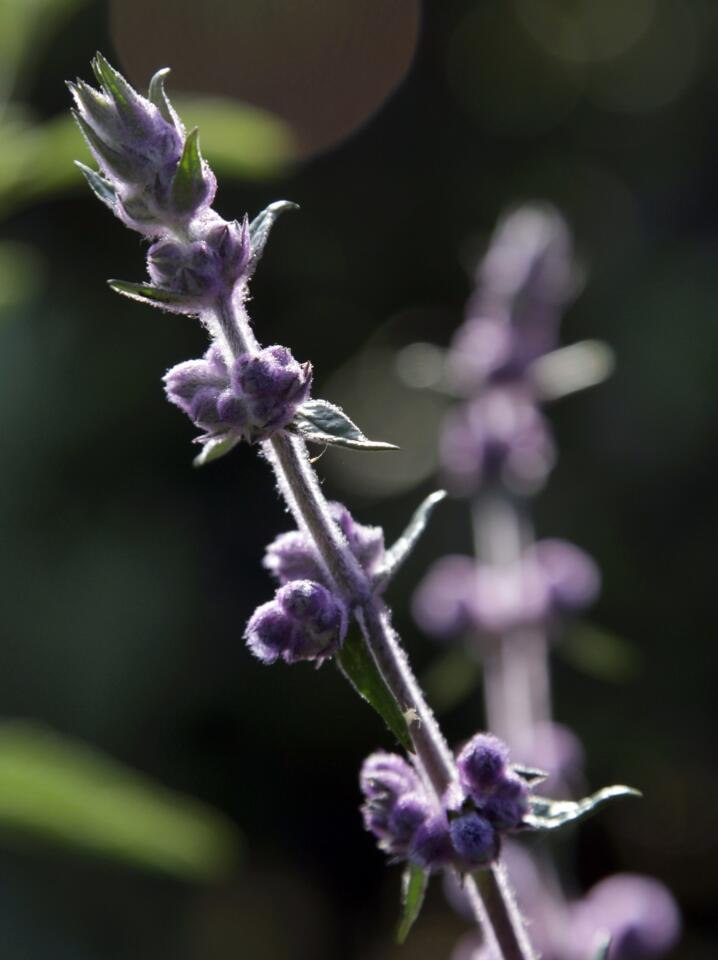
The purple spires of native wooly blue curls (Trichostema lanatum) rise from Debe Loxton’s garden. (Lawrence K. Ho / Los Angeles Times)
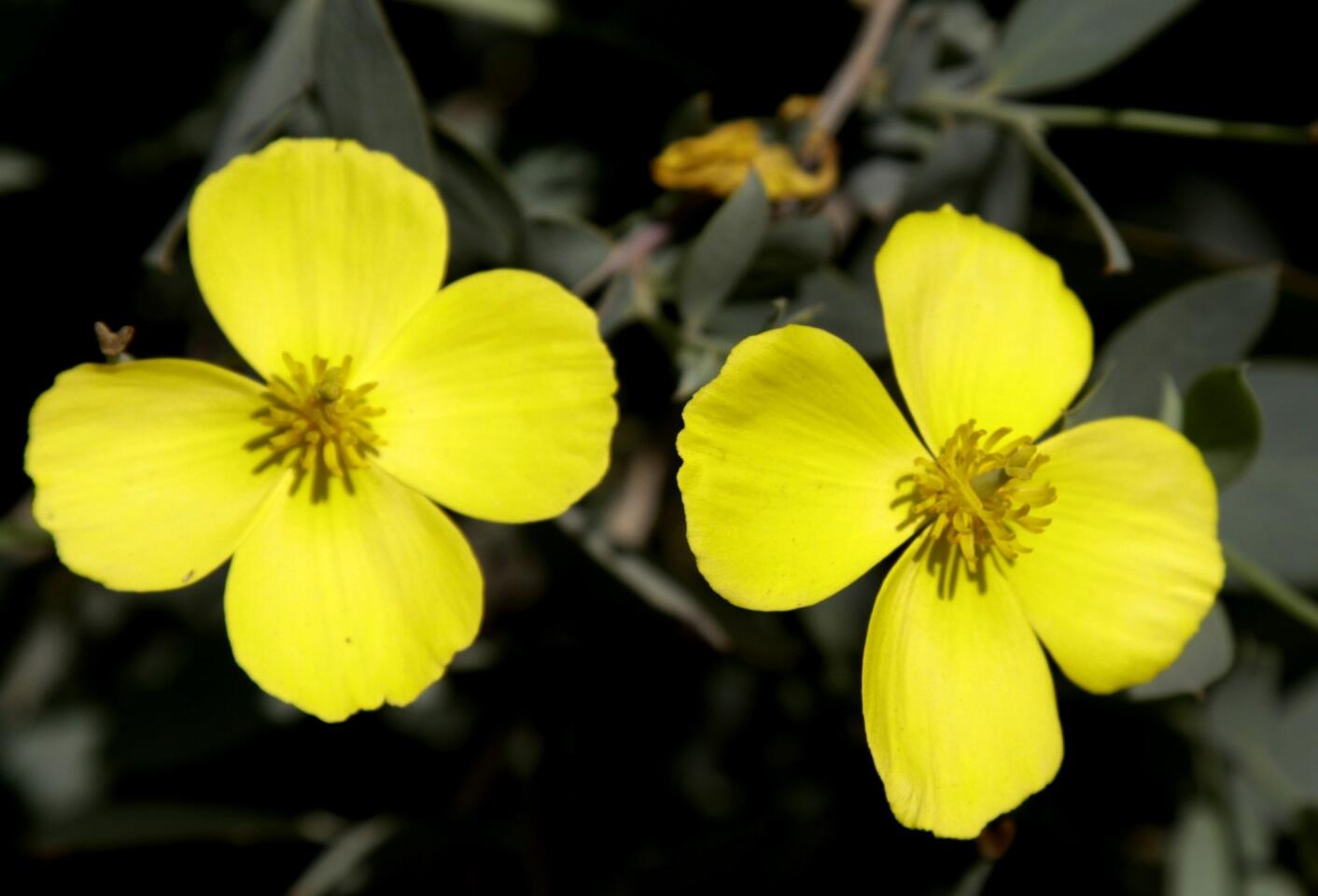
The native island bush poppy, sometimes called Channel Island bush poppy, is a shrubby perennial with sunny spring flowers. (Lawrence K. Ho / Los Angeles Times)
Advertisement
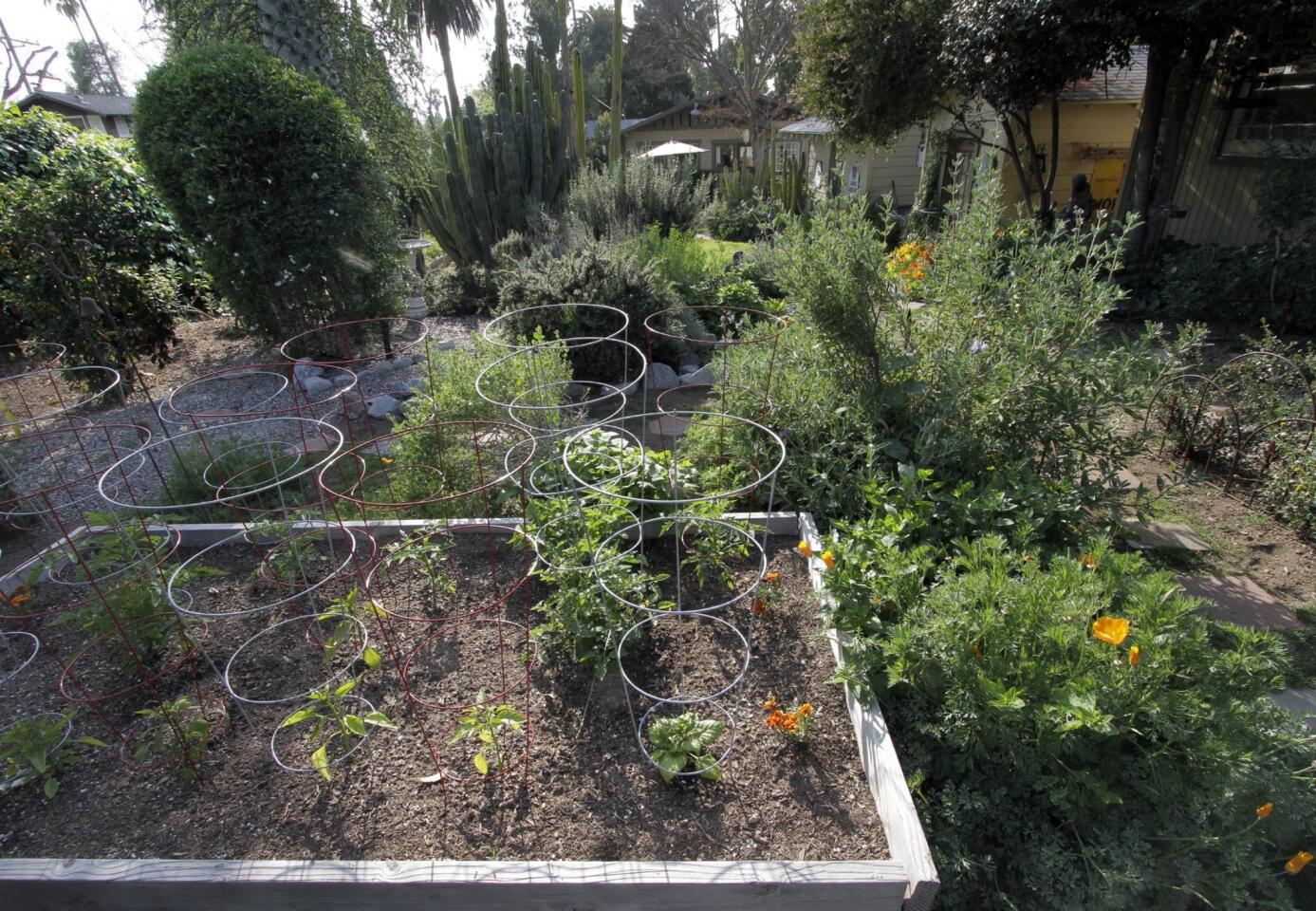
More poppies are beginning to bloom around Debe Loxton’s young tomato plants. The orange flowers will draw pollinators to the garden’s vegetable plants. (Lawrence K. Ho / Los Angeles Times)
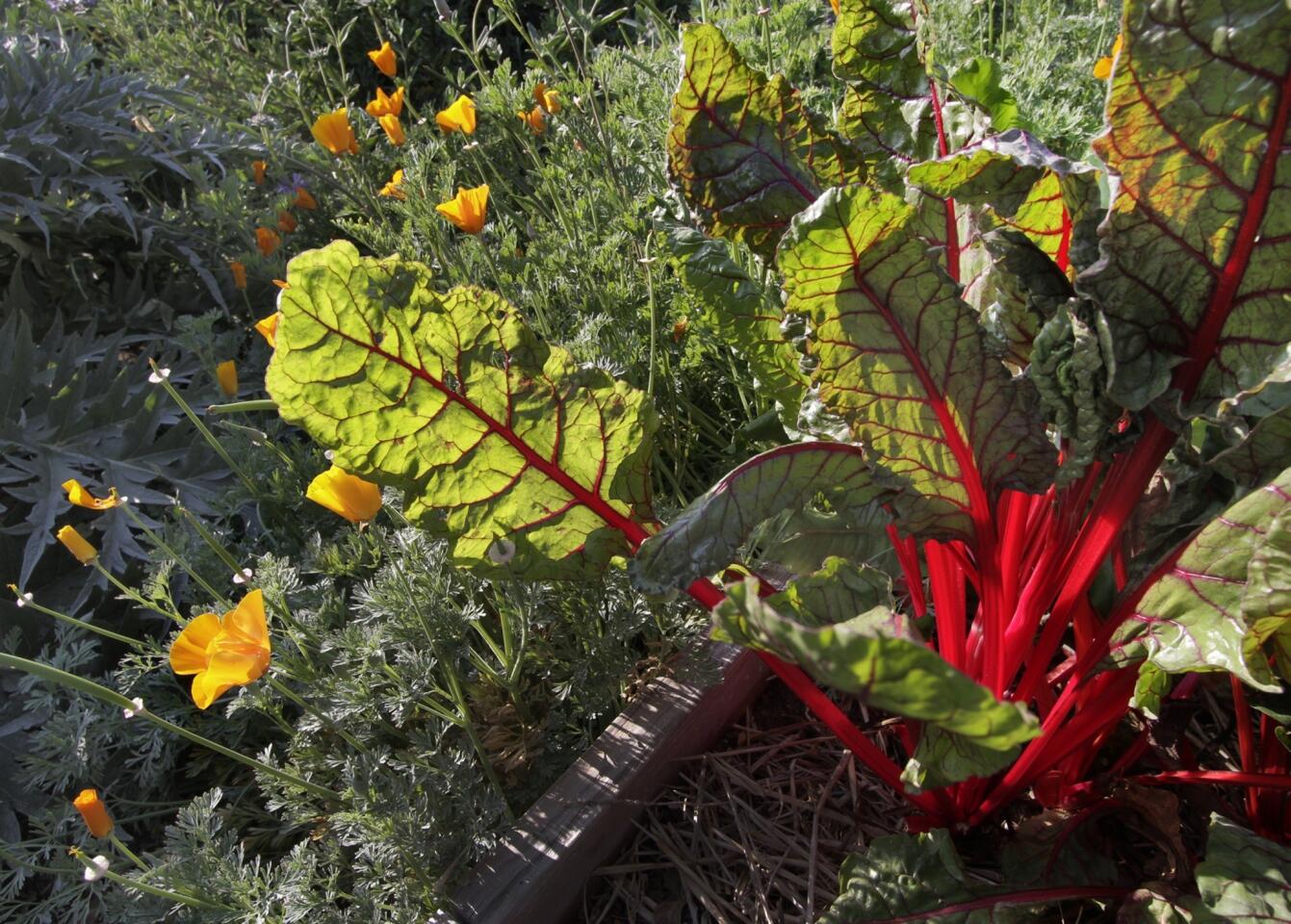
California poppies draw beneficial insects to Debe Loxton’s vegetable garden, where the Swiss chard glows in the afternoon sun. (Lawrence K. Ho / Los Angeles Times)
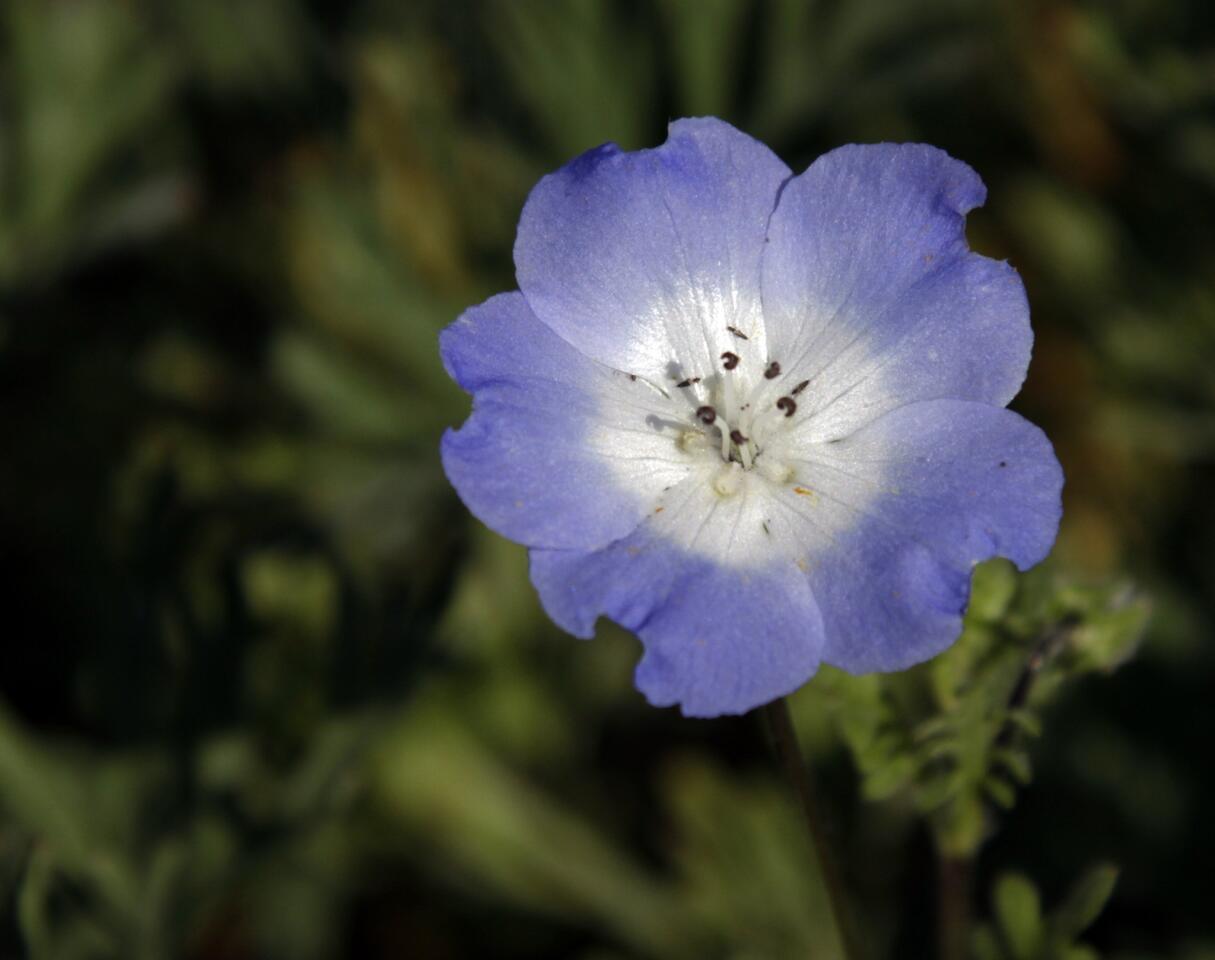
The petite blooms of baby blue eyes. (Lawrence K. Ho / Los Angeles Times)
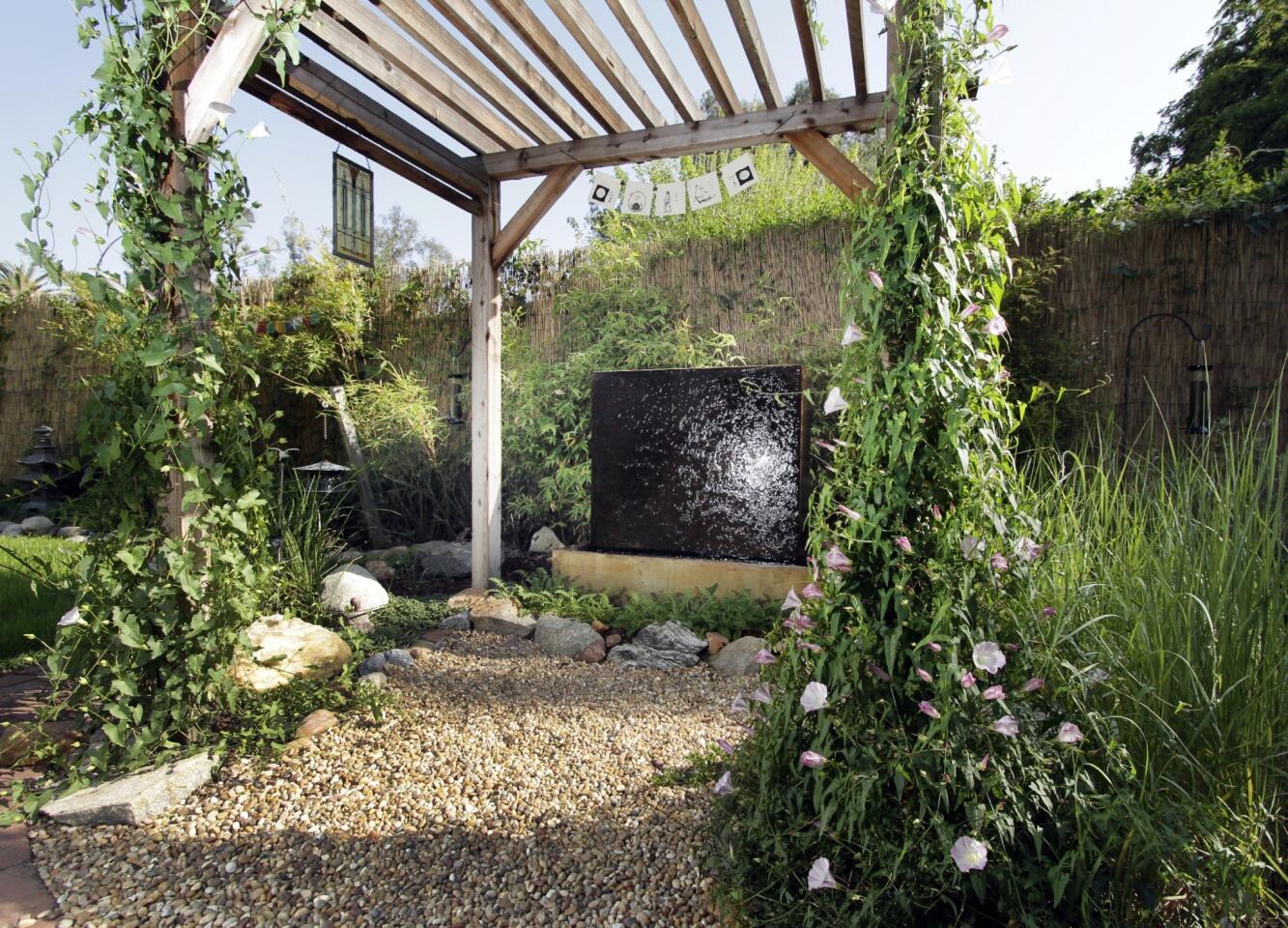
Candy cane morning glory, a California native plant that can work as a green fence or drought-tolerant ground cover, climbs the posts of a shade structure. (Lawrence K. Ho / Los Angeles Times)
Advertisement
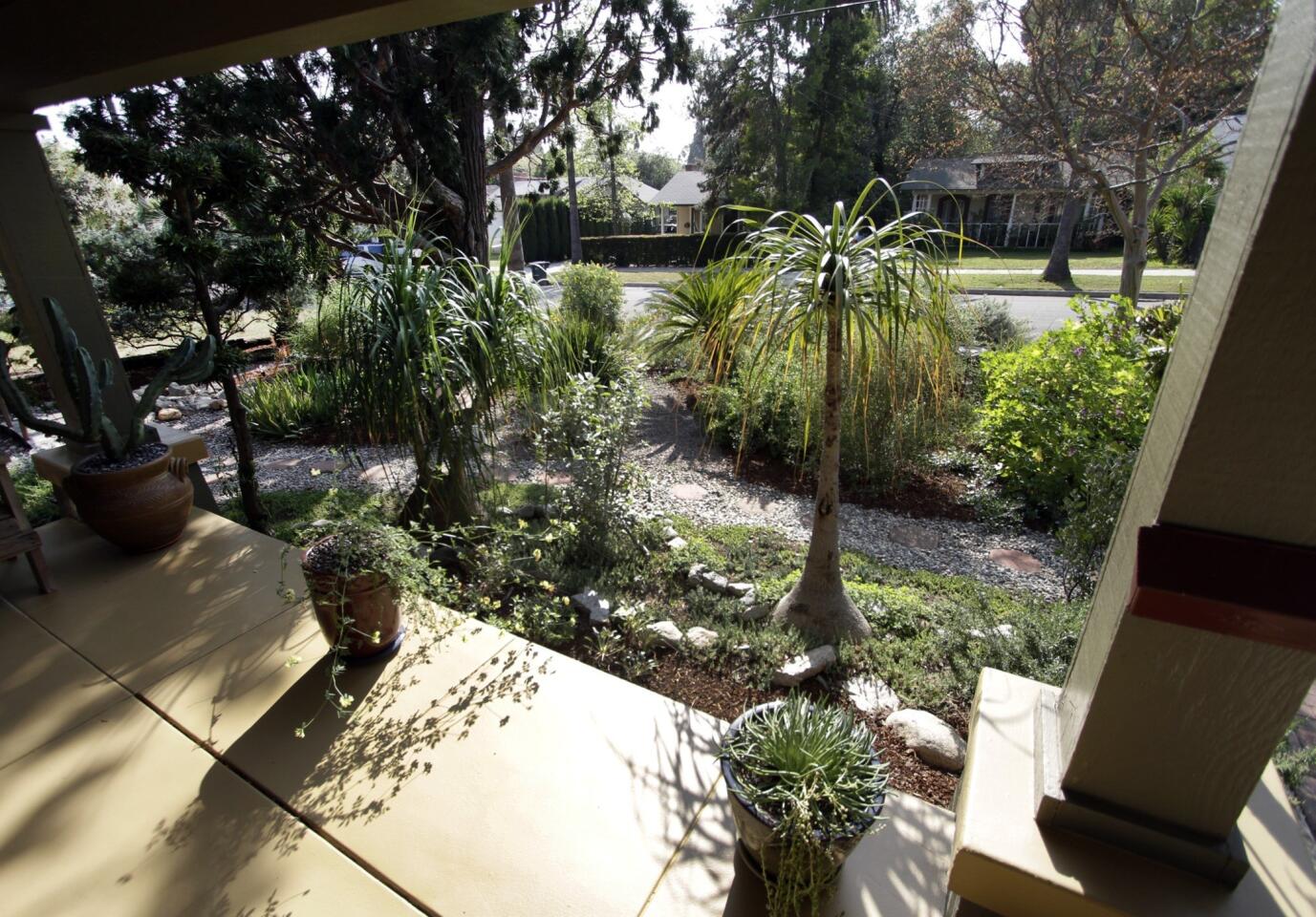
The view from the front porch of Debe Loxton and Martha Clark’s Pasadena house, where California natives and other drought-tolerant plantings thrive in the place of traditional turf. (Lawrence K. Ho / Los Angeles Times)
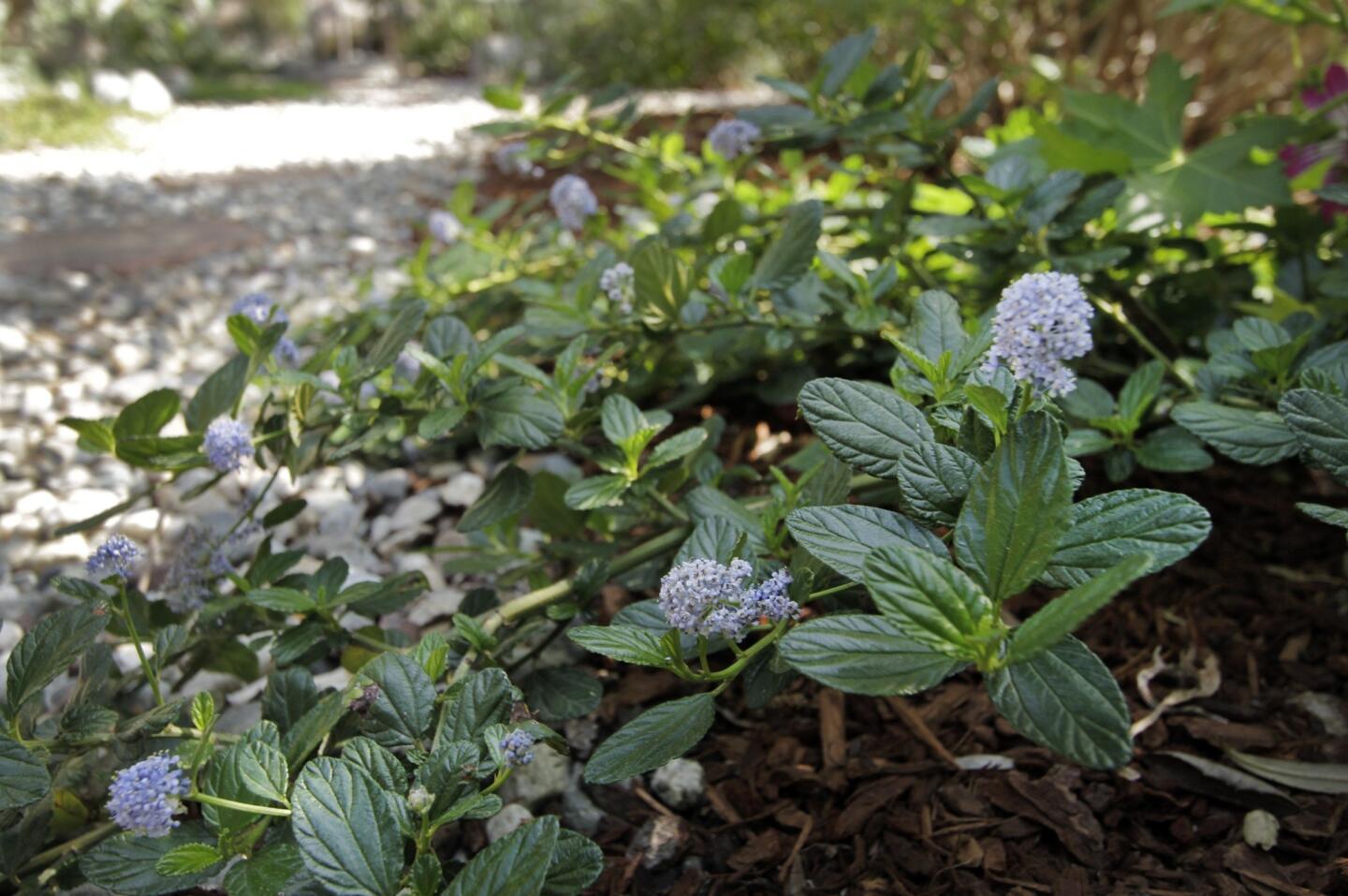
Ceanothus -- that stalwart of California native gardens -- lines the walkway of the Loxton-Clark home. This particular variety is Yankee Point, with low-growing true-green leaves and petite blue flowers. (Lawrence K. Ho / Los Angeles Times)

The shrub is sometimes called malva rosa. (Lawrence K. Ho / Los Angeles Times)
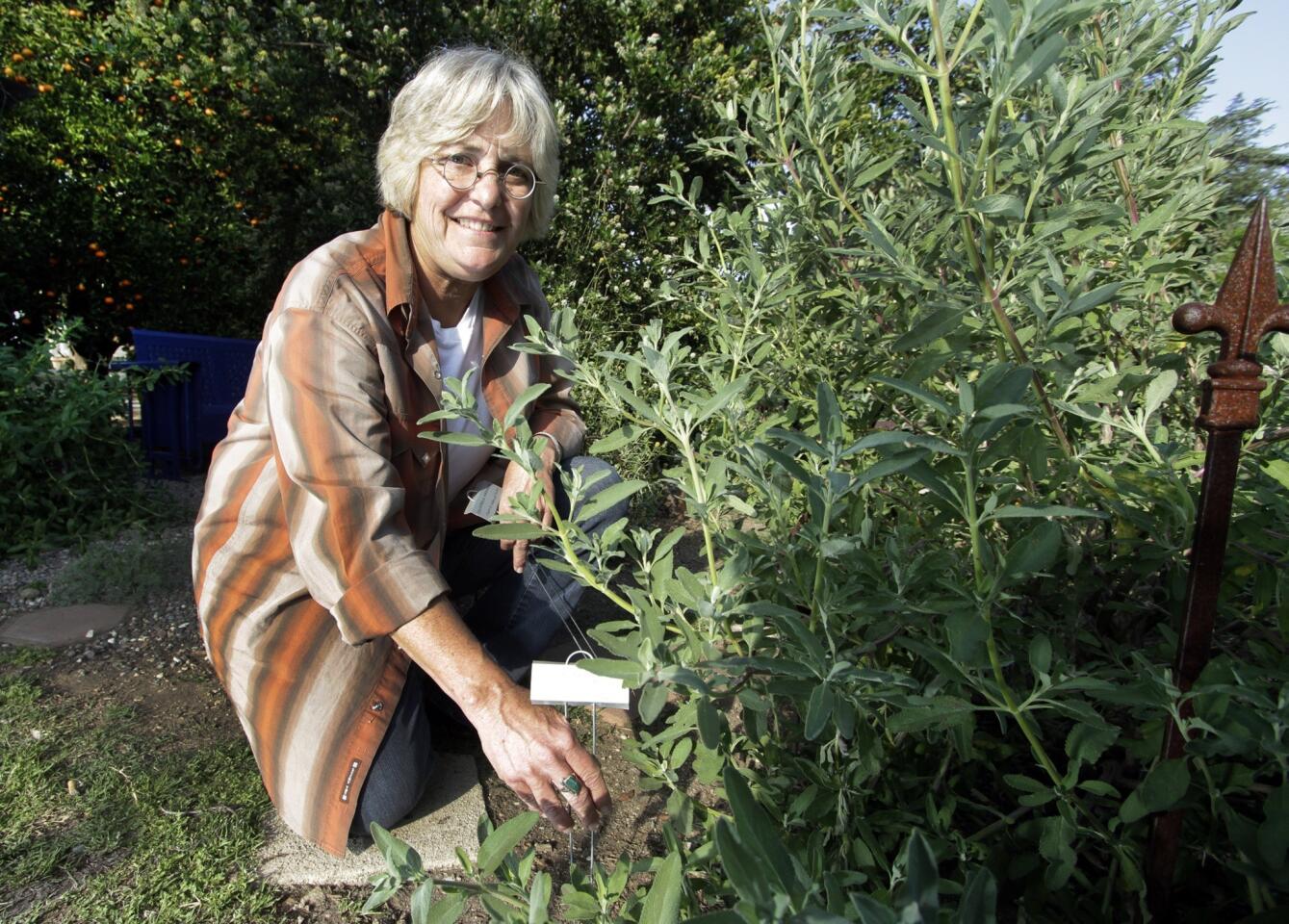
Debe Loxton pictured in her Pasadena garden, one of 42 to be featured in the annual Theodore Payne garden tour. (Lawrence K. Ho / Los Angeles Times)
Advertisement
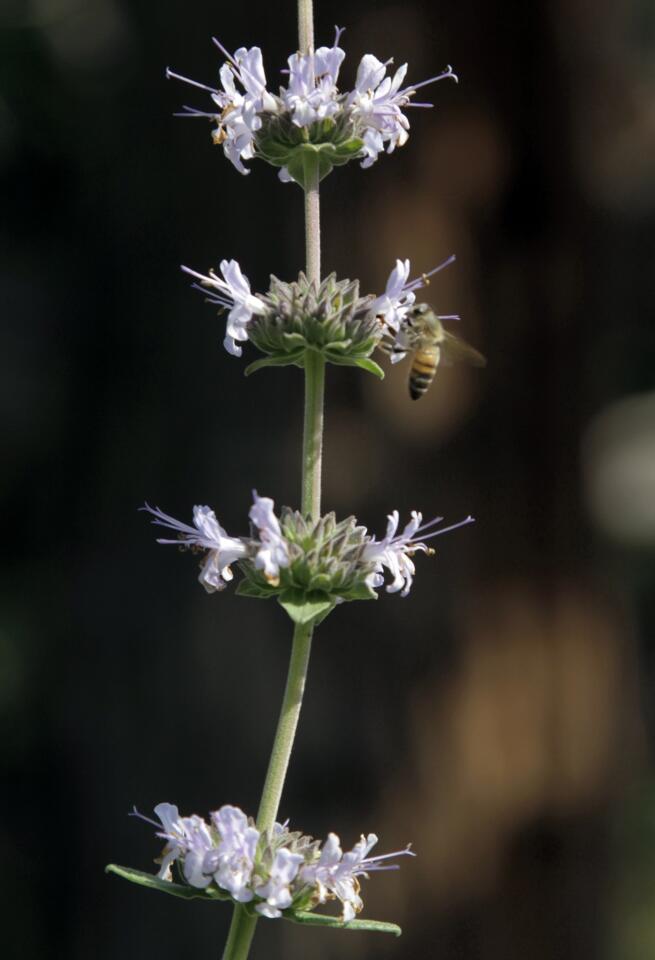
Like many other California natives, Cleveland sage is a favorite of bees and hummingbirds. (Lawrence K. Ho / Los Angeles Times)



